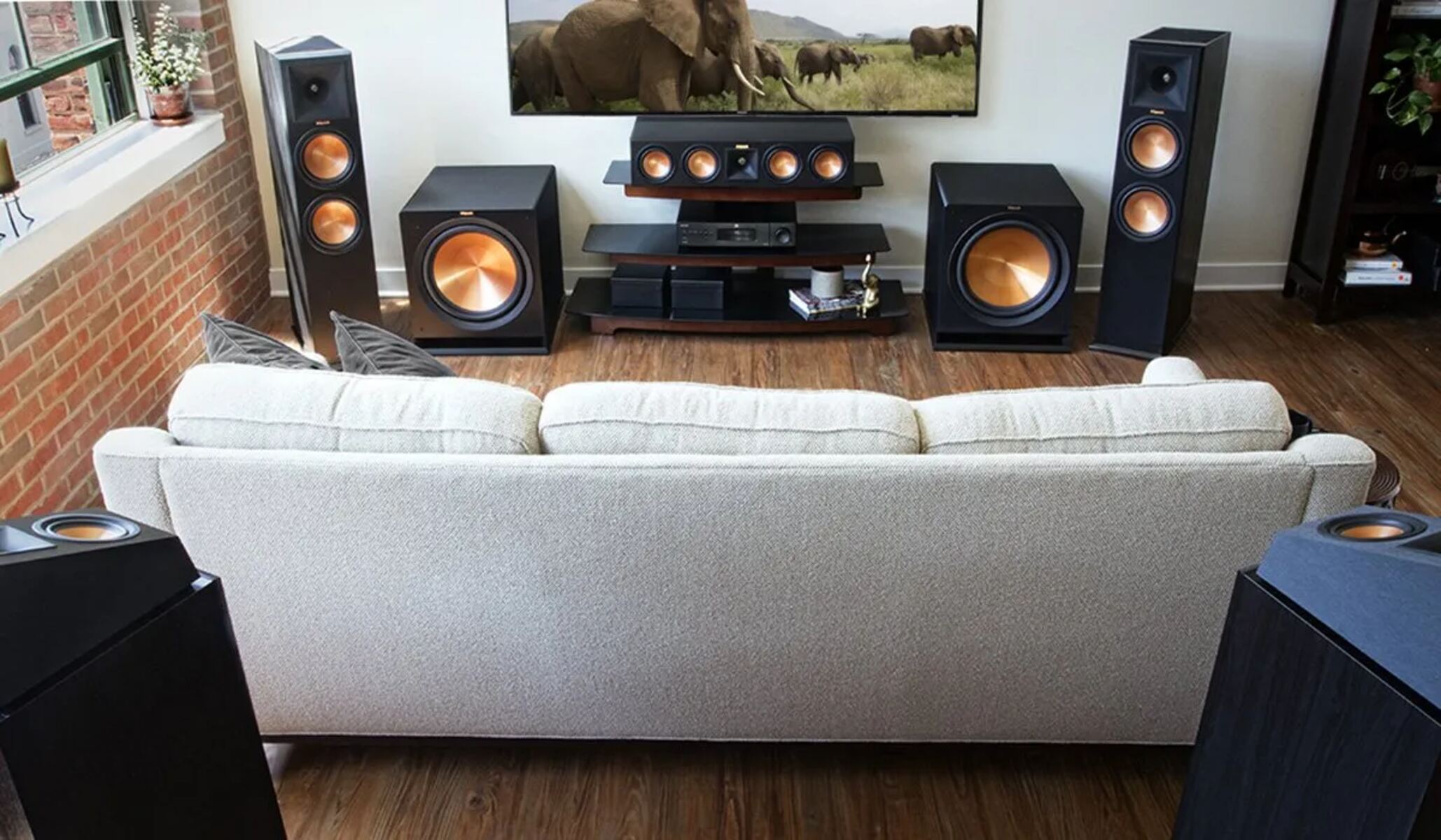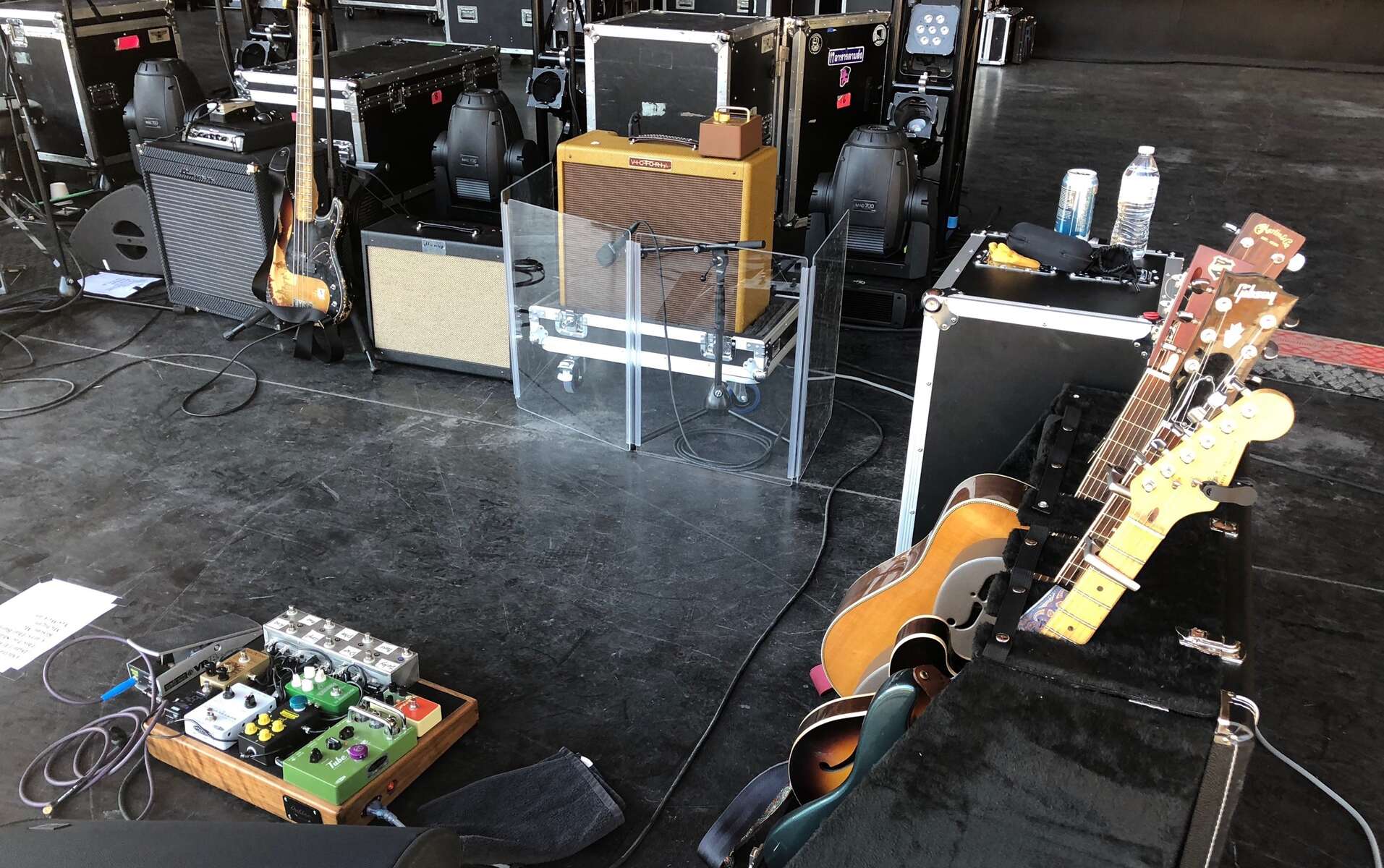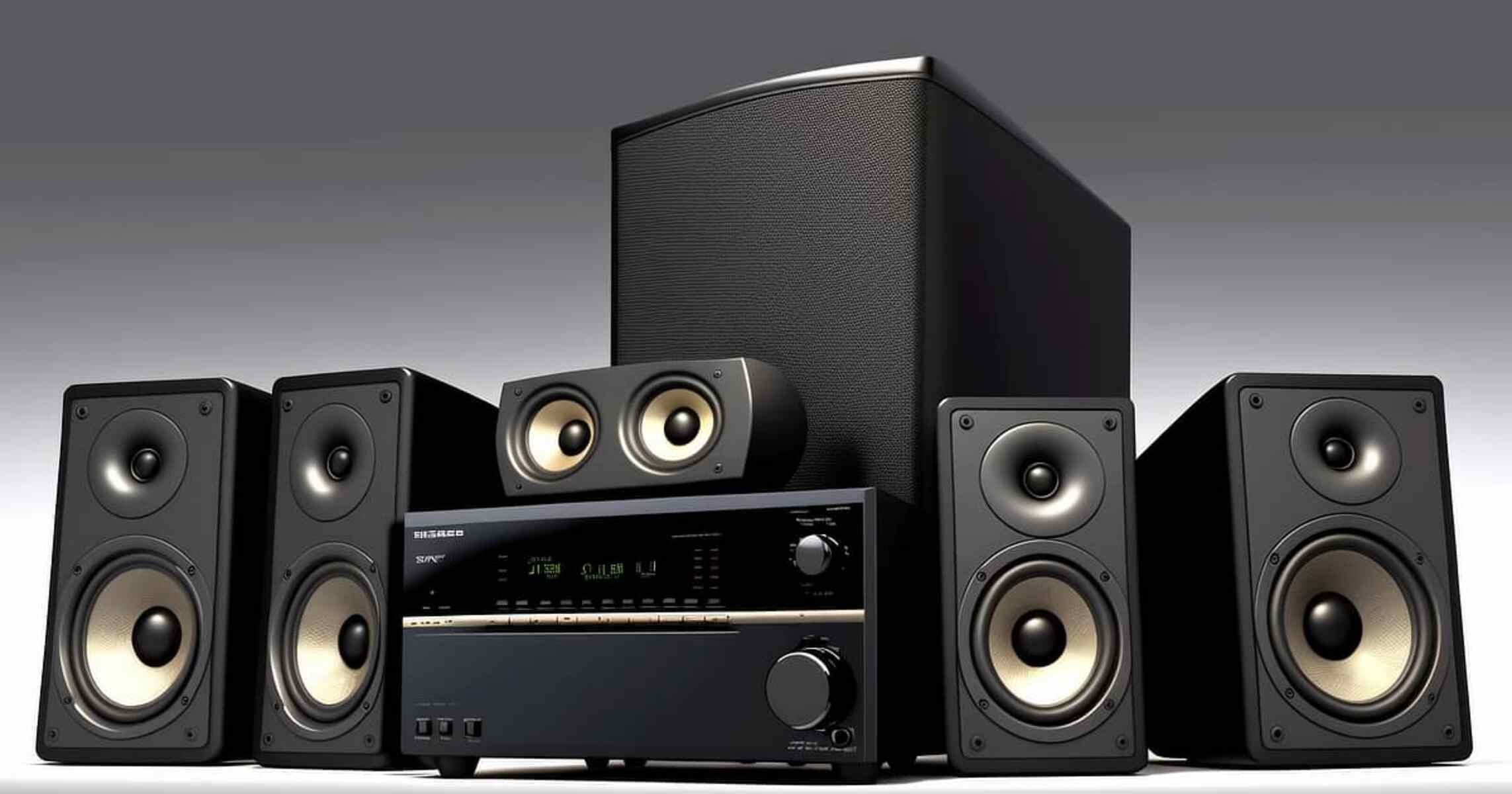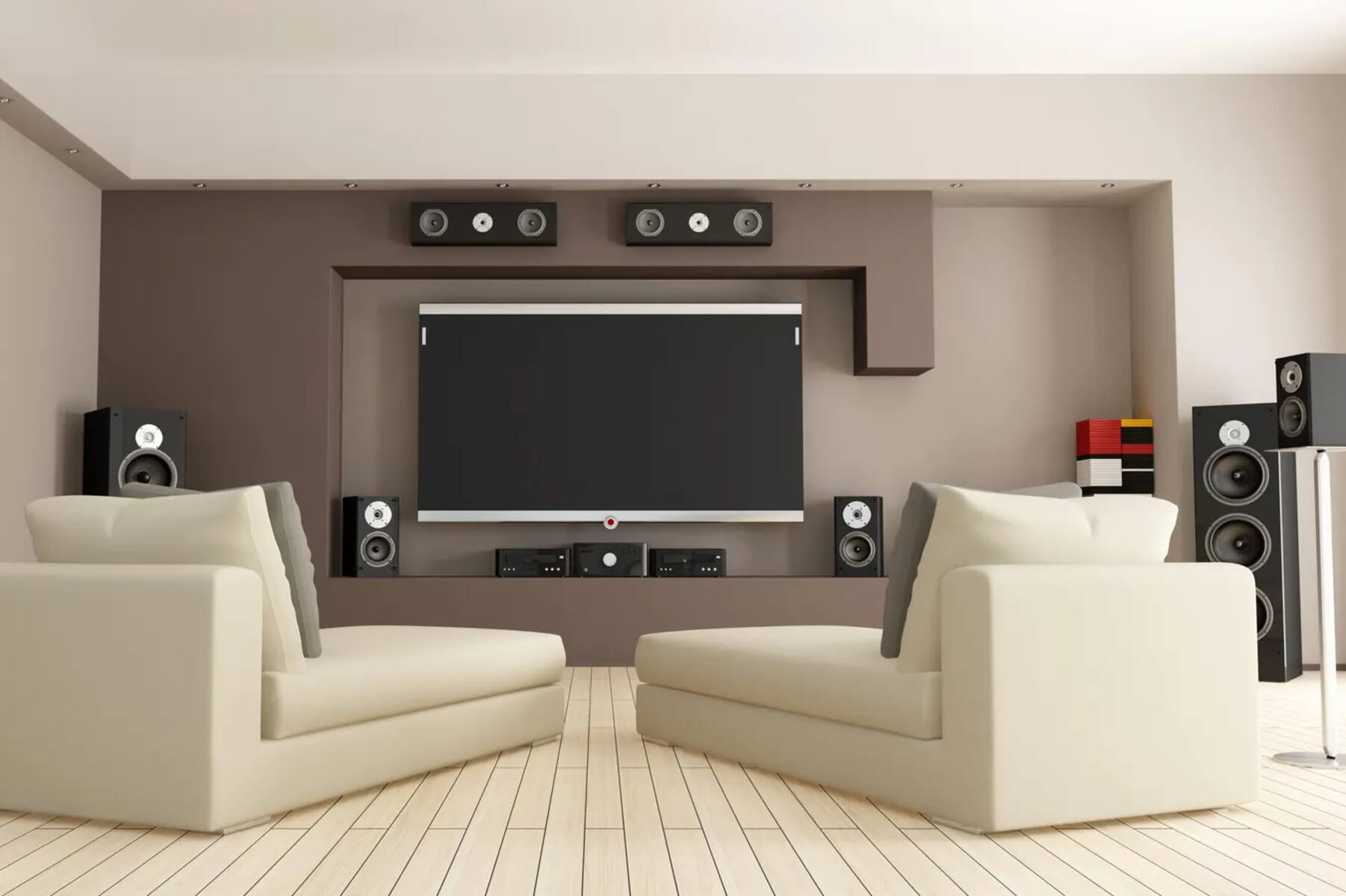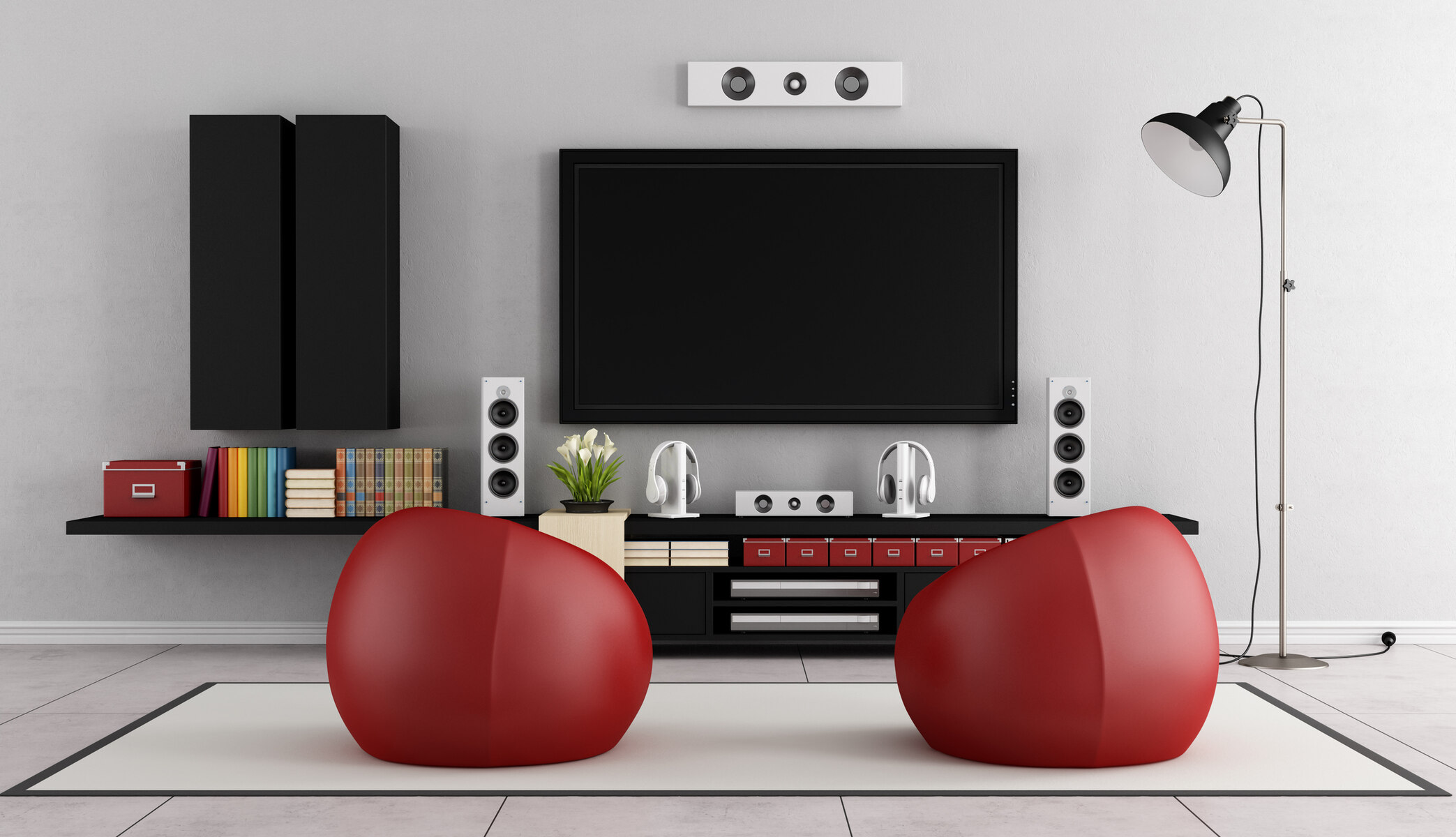Introduction
Welcome to the world of surround sound systems, where audio comes to life and immerses you in a truly captivating experience. Whether you’re watching a movie, playing video games, or listening to music, a surround sound system brings depth, clarity, and richness to the audio that traditional stereo speakers can’t match.
But what exactly is surround sound? How does it work? And what components make up a surround sound system? In this article, we will dive into the world of surround sound systems, explore their different types, and learn how to set them up for optimal performance.
Surround sound refers to a technology that creates a realistic audio environment by utilizing multiple speakers placed strategically around a room. Unlike stereo sound, which only comes from two speakers (left and right), surround sound allows sound to come from various directions, including in front, behind, and on the sides of the listener.
One of the keys to a successful surround sound system is the choice and placement of speakers. Different types of speakers serve specific purposes in creating the immersive audio experience. These speakers, along with other components such as an audio receiver and a subwoofer, work together to deliver a multidimensional soundstage that puts you at the center of the action.
In the next sections, we will explore the various components that make up a surround sound system, the different types of surround sound systems available, how surround sound works, the benefits of having a surround sound system, and some tips for setting up your own system.
So, if you’re ready to elevate your audio experience to new heights, let’s dive in and discover everything you need to know about surround sound systems.
What is Surround Sound?
Surround sound is a technology that enhances the audio experience by creating a three-dimensional sound environment. It goes beyond the traditional stereo setup of two speakers to immerse you in a more realistic and captivating audio experience. With surround sound, you can hear sounds coming from all around you, just like in a movie theater or a concert hall.
The key concept behind surround sound is the use of multiple speakers strategically placed in different positions around the room. These speakers work together to create a sense of auditory depth, which adds realism and immersion to any audio content you are experiencing.
One of the core principles of surround sound is the idea of sound localization. Sound localization refers to our ability to perceive the direction and location of sounds in our environment. By utilizing multiple speakers, surround sound systems are able to reproduce sounds from specific locations in space, enhancing the overall listening experience.
Surround sound systems can reproduce audio in various formats, including but not limited to stereo, 5.1, and 7.1 channel configurations. The numbers in these configurations represent the number of main speakers and subwoofers in the system. For example, a 5.1 channel surround sound system typically consists of five main speakers (front left, front center, front right, surround left, and surround right) and one subwoofer.
With surround sound, you can fully immerse yourself in the world of movies, music, and video games. Imagine watching an action-packed movie and hearing the sound of bullets whizzing past your ears or the roar of a car zooming from behind you. It truly adds a new dimension to the viewing experience.
In the next sections, we will explore the different components that make up a surround sound system, the types of surround sound systems available, how surround sound works, the benefits of having a surround sound system, and some tips for setting up your own system.
Components of a Surround Sound System
A surround sound system consists of several essential components that work together to deliver an immersive audio experience. Each component plays a crucial role in reproducing sounds from different directions and frequencies, creating a rich and dynamic soundstage. Let’s take a closer look at the key components you’ll find in a typical surround sound system:
- Speakers: Speakers are at the heart of any surround sound system. They come in different types, including front, center, surround, and height speakers. Front speakers produce the primary audio content, while the center speaker helps anchor sounds to the on-screen action. Surround speakers create the illusion of sounds coming from behind or beside the listener. Height speakers add a vertical dimension for a more immersive experience in systems like Dolby Atmos.
- Audio Receiver: The audio receiver serves as the central hub of the surround sound system. It receives audio signals from various sources, such as a Blu-ray player, game console, or streaming device, and amplifies and distributes the signals to the appropriate speakers. It also decodes audio formats and provides the necessary processing to create the surround sound effect.
- Subwoofer: The subwoofer is responsible for reproducing low-frequency sounds, commonly referred to as bass. It adds depth, impact, and realism to explosions, rumbling thunder, and musical bass lines. The subwoofer is typically placed in a central location in the room to create a balanced bass response.
- Soundbar: A soundbar is an all-in-one speaker system that combines multiple speakers into a single, slim unit. It is designed to provide a simulated surround sound experience without the need for additional speakers. Soundbars are a popular choice for those who want enhanced audio quality and immersive sound without the complexity of a full surround sound setup.
- Amplifier: Amplifiers are used to increase the power of the audio signals from the receiver and channel them to the speakers. They ensure that the speakers have enough power to reproduce the audio accurately and at the desired volume levels. Some audio receivers have built-in amplifiers, while others require external ones.
These components work together harmoniously to create a surround sound experience that engulfs you in lifelike audio. The specific setup and configuration of these components may vary depending on the type of surround sound system you choose and your personal preferences.
In the next sections, we will explore the different types of surround sound systems available, how surround sound works, the benefits of having a surround sound system, and some tips for setting up your own system.
Speakers
Speakers are a crucial component of any surround sound system, as they are responsible for reproducing the audio and creating an immersive listening experience. Different types of speakers serve specific purposes in the surround sound setup. Let’s explore the main types of speakers commonly found in a surround sound system:
- Front Speakers: The front speakers are the primary speakers in the system and play a vital role in reproducing the main audio content. They are typically placed on either side of the TV or screen and are responsible for delivering dialogue, music, and sound effects that come from the front of the listener. Front speakers come in various designs, such as tower speakers, bookshelf speakers, or in-wall speakers.
- Center Speaker: The center speaker is placed above or below the TV or screen and is responsible for anchoring the dialogue and on-screen action to the center of the soundstage. It ensures that voices and sounds coming from the center of the screen are accurately reproduced. The center speaker plays a crucial role in enhancing the clarity and intelligibility of dialogue, making it an essential component for an immersive audio experience.
- Surround Speakers: Surround speakers are placed to the sides or behind the listener and create a sense of spaciousness and depth in the audio. They reproduce sounds that come from the sides or behind, adding realism to movie soundtracks and creating an immersive experience. Surround speakers can be in the form of bookshelf speakers, satellite speakers, or in-wall speakers.
- Height Speakers (in Dolby Atmos systems): In Dolby Atmos systems, height speakers are used to create a three-dimensional sound experience. These speakers are placed above the listener and deliver audio content that comes from overhead, adding a new dimension to the surround sound experience. Height speakers can be in the form of upward-firing speakers, in-ceiling speakers, or in-wall speakers.
Choosing the right speakers for your surround sound system is crucial, as it greatly impacts the audio quality and overall immersion. Consider factors such as speaker size, frequency response, power handling, and sensitivity when selecting speakers. It’s also important to properly position the speakers in the room for optimal performance.
In the next sections, we will explore the other components of a surround sound system, the different types of surround sound systems available, how surround sound works, the benefits of having a surround sound system, and some tips for setting up your own system.
Audio Receiver
The audio receiver is a critical component of a surround sound system, acting as the control center and amplifier for the audio signals. It receives audio input from various sources, such as Blu-ray players, game consoles, or streaming devices, and processes and distributes the signals to the appropriate speakers. Let’s take a closer look at the role and features of an audio receiver in a surround sound setup:
Function: The primary function of an audio receiver is to receive audio signals and amplify them for the speakers. It serves as the central hub that connects and manages all the audio sources in the system.
Decoding Audio Formats: Audio receivers are equipped with the ability to decode different audio formats, such as Dolby Digital, DTS, and Dolby Atmos. These formats are used to encode audio tracks in movies, TV shows, and music, and the receiver interprets and processes these formats to deliver the appropriate sound to the speakers.
Channel Configuration: Audio receivers support various channel configurations, such as 2.0, 5.1, or 7.1. The number in the configuration represents the number of main speakers and subwoofers in the system. For example, a 5.1 channel system consists of five main speakers (left, center, right, surround left, surround right) and one subwoofer. The receiver manages the distribution of audio signals to the respective speakers based on the channel configuration.
Audio Processing: Audio receivers often come with built-in audio processing features that enhance the surround sound experience. These features may include room correction technologies, equalizers, and sound field adjustment, allowing you to fine-tune the audio output based on your room’s acoustics and personal preferences.
Connectivity: Audio receivers offer a variety of connectivity options to accommodate different audio sources and devices. They typically include HDMI inputs and outputs for seamless transmission of both audio and video signals. Additionally, receivers may have analog inputs, digital audio inputs, USB ports, and network connectivity for streaming audio from online services.
Power Amplification: Audio receivers have built-in amplifiers that provide the necessary power to drive the speakers. The power output of the amplifier determines the volume and overall sound quality of the system. Some receivers also support external amplifiers for increased power and flexibility in larger or more demanding setups.
When choosing an audio receiver, consider factors such as the number and types of inputs and outputs, compatibility with your audio sources, audio processing features, and power output. It’s essential to select a receiver that can handle your desired configuration and offers the necessary features for your audio needs.
In the next sections, we will explore the other components of a surround sound system, the different types of surround sound systems available, how surround sound works, the benefits of having a surround sound system, and some tips for setting up your own system.
Subwoofer
The subwoofer is a fundamental component of a surround sound system that delivers low-frequency sounds, commonly referred to as bass. It plays a crucial role in enhancing the overall audio experience by adding depth, impact, and realism to movie explosions, rumbling thunder, or the thumping beat of music. Let’s take a closer look at the subwoofer and its significance in a surround sound setup:
Bass Reproduction: The subwoofer is specifically designed to reproduce low-frequency sounds that other speakers may struggle to handle. It focuses on reproducing frequencies below 120Hz, which are responsible for generating deep and powerful bass tones. These low frequencies add a sense of realism and impact to movie soundtracks, music, and other audio content.
Placement: The placement of the subwoofer in the room can significantly impact its performance. Optimal placement involves finding a location where the subwoofer can produce smooth and evenly distributed bass throughout the listening area. Experimenting with different positions, such as corners or along walls, can help achieve the best bass response. Additionally, many subwoofers offer built-in controls to adjust the volume, phase, and crossover settings to further optimize the sound.
Crossover: The subwoofer is typically connected to the audio receiver via a dedicated subwoofer output or a dedicated low-frequency effects (LFE) channel. The receiver sends low-frequency signals to the subwoofer, while directing higher-frequency content to the other speakers. This crossover ensures that each speaker focuses on reproducing the appropriate frequencies for a balanced and accurate soundstage.
Active vs. Passive: Subwoofers can be categorized as either active or passive. Active subwoofers have built-in amplifiers and incorporate their own power source, making them self-powered and easy to set up. Passive subwoofers, on the other hand, require an external amplifier or receiver to provide power. Choosing between active and passive subwoofers depends on your specific needs and the capabilities of your surround sound system.
Bass Management: Many audio receivers and surround sound processors offer bass management features to optimize the performance of the subwoofer. Bass management allows you to adjust the crossover frequency and control the distribution of low-frequency sounds between the subwoofer and the main speakers. This ensures that the subwoofer seamlessly blends with the other speakers, producing a cohesive and well-integrated soundstage.
A properly calibrated subwoofer can completely transform the audio experience, adding a new dimension and depth to your favorite movies, music, and games. By reproducing the low-frequency sounds accurately and effectively, the subwoofer enhances the overall immersion and realism.
In the next sections, we will explore the other components of a surround sound system, the different types of surround sound systems available, how surround sound works, the benefits of having a surround sound system, and some tips for setting up your own system.
Soundbar
A soundbar is a popular alternative to a traditional surround sound system that offers an all-in-one solution for enhanced audio quality and immersive sound. It is a single, elongated speaker unit that combines multiple speakers into one slim enclosure. While it may not provide the same level of surround sound experience as a full-fledged system, a soundbar delivers improved audio performance compared to built-in TV speakers. Let’s explore the features and benefits of a soundbar:
Compact Design: A key advantage of a soundbar is its space-saving design. It is much neater and more compact compared to a complex setup with multiple speakers and wiring. The sleek and slim profile of a soundbar allows it to easily blend in with any room decor and can be mounted on a wall or placed on a shelf in front of the TV.
Improved Audio Quality: Soundbars are designed to provide superior audio performance compared to the standard speakers found in TVs. They typically feature multiple built-in drivers and amplifiers that work together to produce clearer and more detailed sound. With dedicated speakers for different frequency ranges, soundbars can deliver enhanced dialogue clarity, improved mid-range frequencies, and even some semblance of virtual surround sound experience.
Virtual Surround Sound: Although a soundbar cannot replicate the full surround sound experience of a multi-speaker setup, many soundbars employ advanced audio processing technologies to simulate a wider soundstage. Through techniques like virtual surround sound or virtualization technology, soundbars aim to create a sense of audio immersion by widening the sound image and creating the illusion of sounds coming from different directions.
Connectivity: Soundbars offer various connectivity options to accommodate different audio sources. They typically have multiple inputs, such as HDMI, optical, coaxial, and Bluetooth, allowing you to connect your TV, Blu-ray player, gaming console, or mobile devices. Some high-end soundbars feature wireless connectivity, enabling seamless audio streaming from compatible devices.
Additional Features: Many soundbars come with additional features to enhance the user experience. These may include built-in subwoofers or the capability to connect an external subwoofer for improved bass response. Some soundbars also support streaming services, voice control assistants (such as Alexa or Google Assistant), and wireless music playback via Wi-Fi or Bluetooth, making them a versatile audio hub for your entertainment needs.
A soundbar is an excellent choice for those who want an easy-to-set-up audio solution with improved sound quality. While it may not offer the same level of immersion as a dedicated surround sound system, it can vastly enhance the audio experience over standard TV speakers.
In the next sections, we will explore the other components of a surround sound system, the different types of surround sound systems available, how surround sound works, the benefits of having a surround sound system, and some tips for setting up your own system.
Amplifier
The amplifier is a vital component in a surround sound system that amplifies the audio signals from the audio receiver and provides the necessary power to drive the speakers. It plays a crucial role in ensuring that the speakers accurately reproduce the audio content with optimal clarity and volume. Let’s explore the features and importance of an amplifier in a surround sound setup:
Power Amplification: The primary function of an amplifier is to increase the power of the audio signals from the audio receiver. The amplified signals are then sent to the speakers, enabling them to produce sound at the desired volume levels. The power output of the amplifier is a critical factor in determining the overall loudness capability and dynamic range of the sound system.
Speaker Compatibility: Amplifiers are designed to match the specific impedance and power requirements of the speakers used in the surround sound system. It’s important to choose an amplifier that can handle the power demands of your speakers to ensure optimal performance and to prevent damage to the speakers or the amplifier itself.
Channels and Configuration: Amplifiers come in various configurations, such as stereo (2-channel), surround (multichannel), or even more advanced configurations like 11.2 or 13.2 channels for highly immersive setups. The channel configuration determines how many speakers the amplifier can power and the level of surround sound it can deliver. It’s essential to select an amplifier that matches the configuration of your surround sound system.
Sound Quality: A high-quality amplifier contributes to improved sound fidelity and accuracy. It helps reproduce the audio content with minimal distortion, delivering a clean and undistorted signal to the speakers. A well-matched amplifier ensures that the speakers are driven properly, allowing them to perform at their best and faithfully reproduce the nuances and details of the audio.
External vs. Built-in Amplifiers: Some audio receivers come with built-in amplifiers, eliminating the need for an external amplifier. However, in more demanding setups or when using speakers with higher power requirements, an external amplifier may be necessary to provide additional power and headroom for optimal performance.
Additional Features: Amplifiers may offer additional features such as tone control, equalization, and room correction technologies. These features allow you to fine-tune and optimize the audio output to better match your room’s acoustics and personal preferences.
Choosing a high-quality amplifier that is compatible with your speakers and suits your surround sound system configuration is vital for achieving the best possible audio performance. It ensures that the speakers are properly powered and can reproduce the audio content accurately.
In the next sections, we will explore the other components of a surround sound system, the different types of surround sound systems available, how surround sound works, the benefits of having a surround sound system, and some tips for setting up your own system.
Types of Surround Sound Systems
Surround sound systems come in various configurations, each offering a different level of immersion and audio experience. The type of surround sound system you choose will depend on your budget, space availability, and personal preferences. Let’s explore the most common types of surround sound systems:
- 2.1 Channel Surround Sound: A 2.1 channel system consists of two main speakers (left and right), and a subwoofer. This setup provides an upgrade over standard stereo sound by adding a dedicated subwoofer for enhanced bass response. While it doesn’t provide true surround sound, it can still offer a more immersive audio experience compared to conventional stereo setups.
- 5.1 Channel Surround Sound: A 5.1 channel system is the most common setup for home theater environments. It consists of five main speakers (front left, center, front right, surround left, and surround right) and one subwoofer. This configuration allows for true surround sound, as the speakers are strategically placed to create a sense of immersion and spatial audio. It provides a significant improvement in audio quality and is ideal for enjoying movies, TV shows, and gaming.
- 7.1 Channel Surround Sound: A 7.1 channel system expands on the 5.1 configuration by adding two additional surround speakers (surround back left and surround back right). This setup further enhances the surround sound experience by providing more precise audio positioning and enveloping the listener with sound from all directions. It is especially beneficial for larger rooms or dedicated home theater setups.
- Immersive Audio Systems (e.g., Dolby Atmos): Immersive audio systems, like Dolby Atmos, utilize additional speakers placed either in or above the listener for a truly three-dimensional audio experience. These systems can range from 5.1.2 to more expansive setups like 7.1.4 or 9.1.4, where the numbers represent the channels for traditional surround sound and the additional height channels for overhead audio. These systems create a sense of sound coming from above, providing a stunning level of audio realism and immersion.
It’s important to note that the number of channels and speakers in a system can vary, and you can customize the setup based on your specific needs and available space. Additionally, advancements in technology have led to the development of soundbars and all-in-one systems that offer virtual surround sound or simulated multi-channel audio, providing a more accessible and streamlined option for those seeking improved audio quality without the complexities of a full surround sound setup.
Consider your room size, budget, and personal preferences when choosing the type of surround sound system that best suits your needs. Whether you opt for a basic 2.1 channel setup or a more elaborate immersive audio system, a surround sound system enhances your audio experience and brings movies, music, and games to life.
In the next sections, we will explore how surround sound works, the benefits of having a surround sound system, and provide some tips for setting up your own system.
2.1 Channel Surround Sound
A 2.1 channel surround sound system is a popular entry-level option that provides an enhanced audio experience over traditional stereo setups. This configuration consists of two main speakers for left and right audio channels, along with a dedicated subwoofer for low-frequency content. While it does not offer the same level of surround sound immersion as more expansive setups, it still provides a noticeable improvement in audio quality and depth.
The two main speakers in a 2.1 channel system work together to deliver stereo sound, with the left speaker handling the left audio channel and the right speaker handling the right audio channel. This separation creates a sense of audio width, enhancing the overall listening experience compared to standard TV or computer speakers.
The subwoofer in a 2.1 channel setup is responsible for reproducing deep bass frequencies. By having a dedicated subwoofer, you can experience powerful and impactful low-end effects in movies, music, and games. The subwoofer adds depth and richness to the audio, making explosions feel more realistic and music sound fuller.
Setting up a 2.1 channel system is relatively straightforward. The main speakers can be placed on either side of the TV or computer monitor, ideally at ear level for optimal audio projection. The subwoofer can be positioned anywhere in the room to achieve the desired bass response, but it is often recommended to place it near a wall or corner to take advantage of the room’s acoustics.
While a 2.1 channel system may not offer the same level of surround sound immersion as higher-channel configurations, it is a fantastic entry point into the world of enhanced audio. It provides a significant improvement over standard stereo systems and is a popular choice for those seeking a more immersive and impactful audio experience without the complexities or space requirements of a full surround sound setup.
In the next sections, we will explore other types of surround sound systems, how surround sound works, the benefits of having a surround sound system, and provide some tips for setting up your own system.
5.1 Channel Surround Sound
A 5.1 channel surround sound system is one of the most popular and widely used configurations for achieving a true surround sound experience at home. This setup consists of five main speakers and one subwoofer, providing immersive audio that surrounds the listener with sound from all directions.
The five main speakers in a 5.1 channel system include a center speaker, two front speakers (left and right), and two surround speakers (left surround and right surround). These speakers are strategically placed to create a soundstage that envelops the listener, enhancing the realism and immersion of movies, TV shows, and games.
The center speaker plays a vital role in anchoring the audio to the on-screen action, ensuring clear and intelligible dialogue. The front speakers deliver audio from the left and right channels, adding width and depth to the soundstage. The surround speakers are responsible for reproducing sound effects and ambient noises, creating a sense of audio movement and directionality.
The subwoofer in a 5.1 channel system handles the low-frequency content, delivering deep and impactful bass. It enhances the overall audio experience, allowing you to feel the rumble of explosions, the thump of music, and the intensity of low-frequency effects. The subwoofer is typically placed in a central location in the room to provide balanced bass response.
Setting up a 5.1 channel system involves positioning the center speaker above or below the TV, placing the front speakers on either side of the TV, and positioning the surround speakers to the sides or slightly behind the listening area. The subwoofer can be placed anywhere in the room to achieve the desired bass effect, though it often works best when located near a wall or corner.
A 5.1 channel surround sound system offers a significantly enhanced audio experience compared to stereo or 2.1 channel setups. It brings movies, TV shows, and games to life by immersing the listener in a multidimensional soundstage. The strategic placement of the speakers and the addition of the subwoofer create a truly captivating audio environment.
In the next sections, we will explore other types of surround sound systems, how surround sound works, the benefits of having a surround sound system, and provide some tips for setting up your own system.
7.1 Channel Surround Sound
A 7.1 channel surround sound system takes the immersive audio experience to the next level by expanding on the 5.1 channel setup. With additional speakers strategically positioned in the room, it offers enhanced surround sound capabilities and finer audio localization. This configuration consists of seven main speakers and one subwoofer, creating a more detailed and dynamic audio environment.
In addition to the five main speakers used in a 5.1 channel system (center, front left, front right, surround left, and surround right), a 7.1 channel setup includes two additional surround speakers placed at the rear (surround back left and surround back right). These rear surround speakers further enhance the surround sound experience and allow for more precise audio panning and localization.
The addition of the rear surround speakers in a 7.1 channel system expands the audio stage and provides a more accurate representation of sound movement. It can be especially beneficial in large rooms or dedicated home theater environments, where the added speakers help fill the space and create a more immersive audio experience.
With a 7.1 channel system, sound engineers can precisely position audio effects in the surround and rear surround channels, resulting in a more cinematic and realistic soundstage. It offers greater detail, depth, and immersion, enabling you to hear audio cues from different directions, enhancing your enjoyment of movies, music, and games.
Setting up a 7.1 channel system involves positioning the additional surround back speakers behind the listening area. The placement should be such that they complement the existing front and surround speakers, creating a cohesive audio image. The subwoofer can be placed anywhere in the room, similar to other surround sound setups, to achieve balanced bass reproduction.
A 7.1 channel surround sound system is ideal for enthusiasts who desire a truly immersive and precise audio experience. With the extended speaker configuration, it offers an even greater sense of audio immersion and realism compared to lower-channel configurations.
In the next sections, we will explore other types of surround sound systems, how surround sound works, the benefits of having a surround sound system, and provide some tips for setting up your own system.
How Does Surround Sound Work?
Surround sound works by utilizing multiple speakers strategically placed around the listener to create an immersive and three-dimensional audio experience. It enhances the audio perception by simulating a natural soundscape, where sounds can come from different directions and distances. Let’s dive into the key elements that make surround sound work:
Audio Localization: One of the fundamental principles of surround sound is audio localization. Our ears are capable of perceiving the direction and location of sounds based on subtle differences in arrival time and volume between our two ears. Surround sound systems leverage this ability by playing certain sounds through specific speakers to create the illusion of audio sources originating from different positions in the room.
Channel Configuration: Surround sound systems are based on a channel configuration that determines the number and placement of speakers. The most common setups, such as 5.1 and 7.1, designate specific channels for different audio signals. For example, a 5.1 system consists of five main speakers (center, front left, front right, surround left, and surround right) along with one subwoofer.
Speaker Placement: The positioning of speakers is crucial for achieving an optimal surround sound experience. Front speakers are typically placed in front of the listener, while surround speakers are positioned to the sides or slightly behind the listening area. Rear surround speakers (in setups like 7.1) are placed at the back of the room. The speakers work together to envelop the listener in a soundscape, creating the perception of sound coming from different directions.
Audio Processing: Audio processing technologies play a significant role in the creation of surround sound. They decode and process audio signals to distribute them to the appropriate speakers, ensuring that each speaker reproduces specific sounds and channels. These technologies also simulate the impression of audio movement, reverberation, and spatial effects, further enhancing the surround sound experience.
Bass Management: Surround sound systems often include a dedicated subwoofer to handle low-frequency sounds, such as deep bass. The subwoofer reproduces these frequencies for a more impactful and immersive audio experience. Proper bass management is crucial to ensure a balanced integration of the subwoofer with the other speakers, delivering a cohesive and realistic soundstage.
By incorporating these elements, surround sound systems create a realistic audio environment that enhances the way we experience movies, music, and games. The coordinated interplay between multiple speakers, precise speaker placement, and advanced audio processing techniques combine to create a captivating and immersive audio experience.
In the next sections, we will explore the different types of surround sound systems, the benefits of having a surround sound system, and provide some tips for setting up your own system.
Benefits of Surround Sound Systems
Surround sound systems offer numerous benefits that greatly enhance the audio experience and bring entertainment to new heights. Whether you’re watching a movie, playing video games, or listening to music, here are some notable advantages of having a surround sound system:
Immersive Audio Experience: Surround sound systems create an immersive audio environment where sound emanates from multiple directions. This enveloping audio enhances the realism of movies, TV shows, and games, making you feel like you’re right in the middle of the action. The precise sound localization and accurate reproduction of audio cues create a more engaging and captivating entertainment experience.
Improved Audio Fidelity: Surround sound systems provide higher audio fidelity compared to standard stereo or TV speakers. With dedicated speakers for different audio channels, the sound is more defined, detailed, and dynamic. You can hear subtle nuances, delicate audio effects, and a wider range of frequencies, making the audio content more engaging and enjoyable.
Enhanced Spatial Awareness: Surround sound systems excel at creating a sense of spatial awareness. The sound coming from different directions allows you to perceive the dimensions and depth of the audio space. This heightened spatial awareness enhances the sense of realism, making you feel fully immersed in the audio environment.
Realistic Sound Effects: One of the significant benefits of surround sound systems is the ability to reproduce sound effects accurately. Explosions, footsteps, car engines, and other audio effects can be precisely localized and placed in the soundstage, enhancing the overall realism and impact of the audio. This adds a new level of excitement and immersion to your entertainment experience.
Music Clarity and Separation: Surround sound systems are not just for movies and games; they also elevate the experience of listening to music. With a dedicated center speaker and well-placed front speakers, vocals and instruments can be precisely positioned, resulting in improved clarity and separation. Music feels more alive and dynamic, allowing you to appreciate intricate details and enjoy a more immersive sonic experience.
Customizable and Scalable: Surround sound systems offer flexibility and scalability. You can choose from different types of systems, such as 2.1, 5.1, or 7.1 channels, based on your preferences and available space. Additionally, many systems allow for expansion with additional speakers or components, enabling you to fine-tune and adapt the system to your changing needs or room size.
Family and Social Entertainment: A surround sound system enhances family and social entertainment by creating a shared audio experience. Movie nights, gaming sessions, or music listening become more immersive and enjoyable for everyone. Surround sound systems create a theater-like environment in the comfort of your own home, enabling you to entertain guests and create memorable experiences together.
With their ability to immerse you in soundscapes, deliver superior audio quality, and provide an incredible entertainment experience, surround sound systems have become a popular choice for home theater enthusiasts, gamers, and audio enthusiasts alike.
In the next sections, we will provide some tips for setting up your own surround sound system, explore different types of systems, and delve into how surround sound works.
Tips for Setting Up a Surround Sound System
Setting up a surround sound system in your home can be an exciting endeavor. To help ensure optimal performance and the best audio experience, consider the following tips when setting up your surround sound system:
Room Acoustics: Pay attention to the acoustics of the room where you will install your surround sound system. Hard surfaces like bare walls, floors, and windows can cause sound reflections and echoes, negatively affecting the audio experience. Consider adding some acoustic treatments, such as curtains, rugs, or acoustic panels, to help dampen the reflections and improve sound quality.
Speaker Placement: Proper speaker placement is crucial for achieving optimal audio performance. Consult the user manual or manufacturer’s recommendations for the ideal placement of each speaker type. Ensure that the speakers are positioned at the recommended heights, angles, and distances from the listening area to enhance sound localization and create a unified soundstage.
Balance and Equalization: Take the time to balance the speaker levels and set the appropriate equalization settings. Most audio receivers have built-in test tones or automated calibration systems that can assist with this process. Balancing the speaker levels ensures consistent audio across all channels, while equalization can help compensate for any room anomalies, resulting in a more accurate and balanced sound.
Subwoofer Placement and Integration: Experiment with various subwoofer placements in the room to find the spot that provides the best bass response. Placing the subwoofer near a wall or corner can often enhance bass output. Additionally, use the crossover settings on your receiver to ensure a smooth transition between the subwoofer and the main speakers, achieving a cohesive and seamless audio experience.
Wiring and Cable Management: Pay attention to proper wiring and cable management to minimize signal loss and interference. Use high-quality speaker wire and ensure proper connections between the receiver and the speakers. Consider using cable management solutions such as cable channels, clips, or conduits to keep the cables neatly organized and hidden, reducing clutter and potential tripping hazards.
Optimal Viewing and Listening Position: Position the listening area or seating position at the appropriate distance from the TV or screen. This distance should be based on the screen size and the viewer’s preference. Additionally, ensure that the speakers are aimed towards the primary listening area to maximize the audio impact and clarity.
Experiment and Fine-Tune: Don’t be afraid to experiment with different settings and configurations to find the sweet spot that suits your preferences. Adjust the speaker distances, levels, and equalization settings according to your room and personal listening preferences. Take the time to listen to different types of content to fully appreciate the capabilities and nuances of your surround sound system.
By following these tips, you can optimize the performance of your surround sound system to achieve the best audio experience. Each room and system configuration is unique, so don’t hesitate to make adjustments and fine-tune as needed to create your ideal immersive audio environment.
In the next sections, we will explore different types of surround sound systems, discuss how surround sound works, and delve into the benefits of having a surround sound system.
Conclusion
Surround sound systems transform the way we experience audio in our homes. By leveraging multiple speakers and advanced audio processing technologies, these systems create an immersive and captivating audio environment that enhances our enjoyment of movies, TV shows, music, and games.
Throughout this article, we have explored the different components that make up a surround sound system, including speakers, audio receivers, subwoofers, soundbars, and amplifiers. We have also discussed various types of surround sound systems, such as 2.1, 5.1, and 7.1 channels, as well as immersive audio systems like Dolby Atmos.
Understanding how surround sound works has given us insights into the spatial audio effects, realistic sound localization, and enhanced audio quality that these systems offer. We have also examined the benefits of having a surround sound system, such as an immersive audio experience, improved audio fidelity, enhanced spatial awareness, and realistic sound effects.
Finally, we provided some valuable tips for setting up your own surround sound system. From considering room acoustics and speaker placement to optimizing subwoofer integration and cable management, these tips can help you achieve optimal audio performance and maximize your enjoyment of your surround sound system.
Whether you choose a 2.1 channel setup for a simpler audio upgrade or opt for a more elaborate 7.1 channel system for a fully immersive home theater experience, surround sound systems bring audio to life in new and exciting ways.
So, go ahead and explore the possibilities of surround sound systems, unlock the full potential of your entertainment, and immerse yourself in the rich and detailed audio experience they offer.







